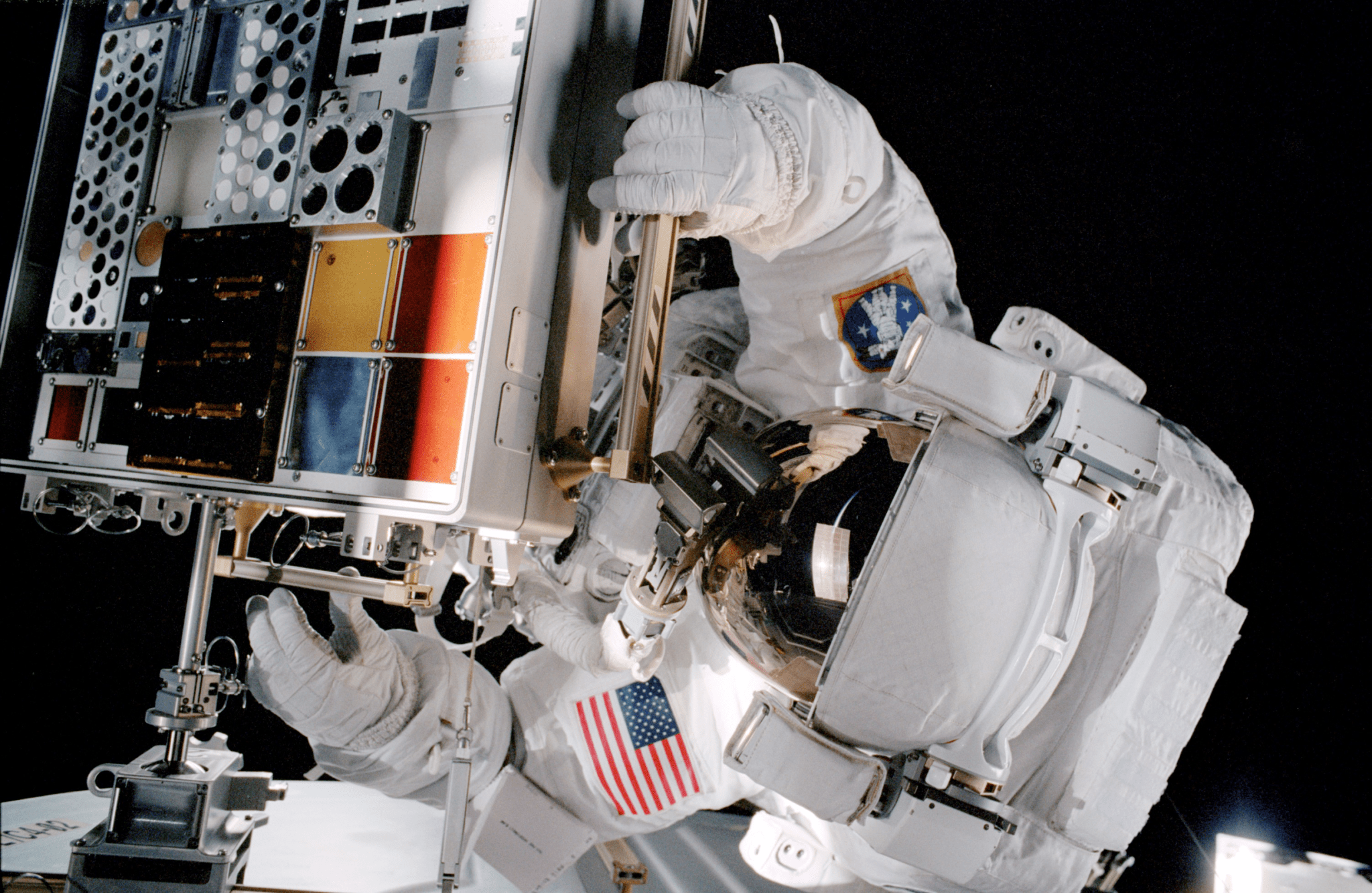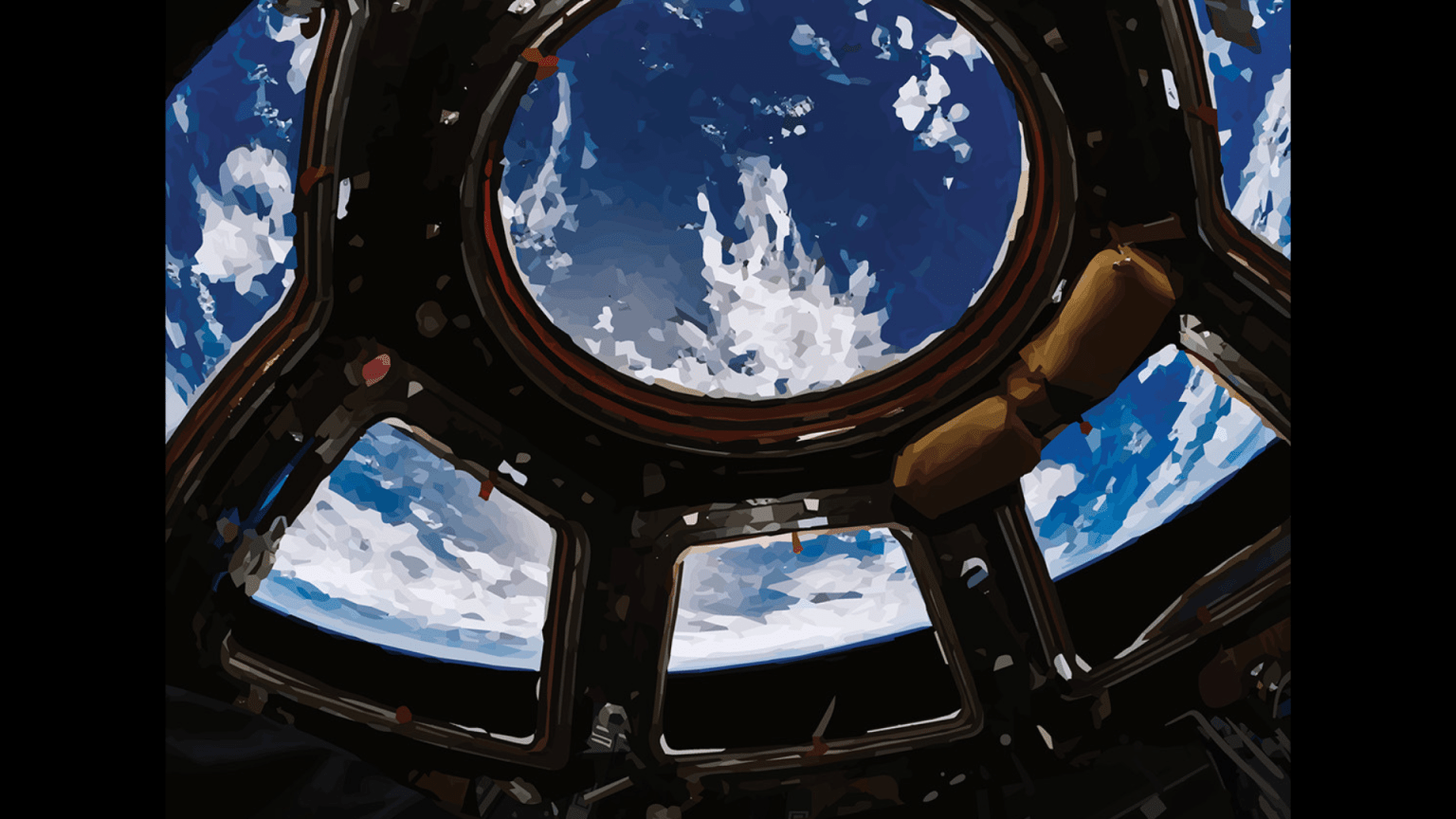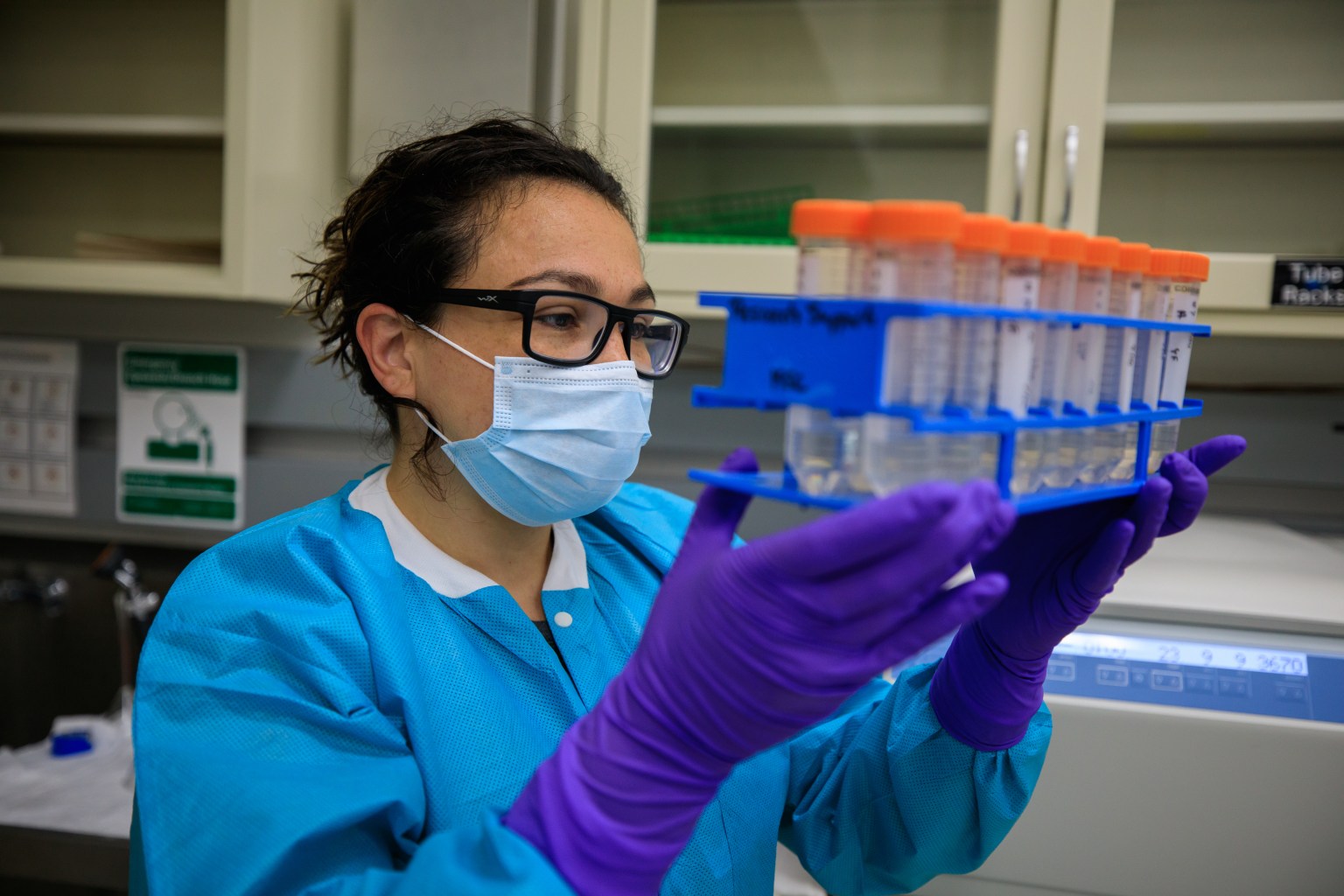
The International Space Station grows up—20 years of research and human presence in low Earth orbit
Over the more than 20 years of continuous habitation since the first crew stepped aboard, the International Space Station has evolved from an orbital outpost into a state-of-the-art scientific lab. This growth included the connection of over a dozen major components, expanding the interior pressurized volume by a factor of five (over 900 cubic meters [1,200 cubic yards]), roughly equivalent to a five-bedroom home. To support the growing research portfolio, power generation increased by more than an order of magnitude.
In 2011, the International Space Station program officially transitioned from a focus on assembly to prioritizing utilization, including research, technology development, educational engagement, and commercial development. Crew time available for scientific and technology activities increased from lows of 10-20 hours per week to highs in excess of 125 hours per week. Bandwidth for data downlinks increased, enabling faster transmission of research data and allowing for more real-time monitoring of experiments. Data downlinks also enable real-time support of station crew by expert scientists on the ground as they conduct hands-on research. As a result, while it took 10 years to initiate the first 1,000 investigations on the station, the second 1,000 took half that time.
The first dedicated science lab, the U.S. Destiny module, was added in 2001. Three additional dedicated science modules have been added to the station since: the ESA (European Space Agency) Columbus and Japan Aerospace Exploration Agency (JAXA) Kibo modules both launched in 2008, and the Russian Nauka module launched in 2021.
Each dedicated science module increased the laboratory’s capacity to host both internal crew-tended research and external experiments conducted on platforms attached to the outside of the station. JAXA’s Kibo module added an additional airlock to the orbiting laboratory. This small airlock, with a sliding mechanism that allows crew to easily transfer science payloads from inside to outside, was specially designed to support external research and reduce the number of crew spacewalks needed for conducting science activities.
The attachment of the iconic Cupola greatly increased capability to provide crew photographs of Earth and celestial objects for use by researchers. The Cupola also provides crew visibility to support control of the space station’s remote manipulator system, anchored by the Canadian Space Agency’s (CSA)’s Canadarm2 and Dextre.
Canadarm2 and Dextre support spacewalks, maintenance, arriving vehicles, and external research activities. Impactful spinoff technologies have been created, thanks to the Canadarm2. Related technology has transformed the way surgery is performed with tools such as neuroArm, an image-guided, computer-assisted neurosurgery device; and the Image-Guided Autonomous Robot (IGAR), a digital surgical tool that provides increased access, precision, and dexterity for performing highly accurate, minimally invasive procedures.
External experiments on station can take advantage of exposure to the harsh environment of space surrounding the orbiting lab. The space station’s first external science facility, the Materials on ISS Experiment (MISSE), entered service in 2001 and hosted eight sets of experiments over the next 15 years. Exposure experiments such as these lead to development of better materials for future spacecraft, spacesuits, and structures needed for space exploration. These materials can also improve radiation protection, solar cell performance, and concrete manufacturing on Earth.
Tests like these continue today using the upgraded MISSE Flight Facility (MISSE-FF). An example of a growing number of commercially owned and operated facilities supporting research aboard the station, MISSE-FF eliminates the need for crew to go outside the station by employing the Canadarm2 to attach exposure samples for testing.
Experiments housed on the outside of station also provide valuable opportunities for conducting Earth observation and astrophysical research. External platforms provide power, command, thermal control, and data throughput for instruments capturing data on Earth’s atmosphere, oceans, and ecosystems, or collecting astrophysical data on cosmic rays or observing at wavelengths largely masked from ground instruments by the atmosphere.
Due to its unique orbit, the space station also provides a vantage point that complements Earth observation data gathered from other satellites. It also offers researchers an opportunity to test and refine their instruments before committing them to long-duration satellite or robotic exploration missions where repair or replacement are not possible.
Although not originally designed for this purpose, station has also become a prolific deployer of small satellites. In 2005, cosmonauts kicked things off by manually releasing the State Space Corporation ROSCOSMOS (ROSCOSMOS) Nanosputnik during a spacewalk. This satellite flew for four months, successfully performing a full program of flight experiments.
The addition of JAXA’s Kibo module and its airlock paved the way for many more small satellites to be deployed from station. Facilities were installed on the orbiting laboratory in 2013 by JAXA and U.S.-based company Nanoracks to automate the deployment process. As of November 2020, more than 250 CubeSats have been deployed from the space station into low-Earth orbit.
As the space station research portfolio has expanded, a significant number of investigations have focused on disease. In particular, the station has been invaluable in conducting protein crystal growth experiments.
In experiments conducted on Mir and on Space Shuttle missions, researchers discovered that they could produce higher quality protein crystals in microgravity than on Earth. The human body contains more than 100,000 types of proteins. Each protein provides information related to our health. Studying these proteins by crystallizing them helps us learn more about our bodies and potential disease treatments. Crystals grown aboard the station as a part of experiments sponsored by JAXA, ROSCOSMOS, NASA, and ISS National Lab have helped identify the structures of proteins relevant to understanding and treating diseases ranging from Duchenne Muscular Dystrophy to heart disease and cancer.
Plasma research, initiated by the first station crew, continued over the next 2 decades as well. The Plasma Kristall-4 (PK-4) study built on this work by designing an apparatus to study dusty or complex plasma. Dusty plasmas are often found in nature—in the tails of comets and planetary rings, for example. Additionally, dust particles can change many technological processes in industry, such as microchip manufacturing, etching, and vapor deposition.
Over time, capabilities for supporting biological and human health research have expanded to include facilities for studying the impact of microgravity on plants, microbes, and animals. Species as diverse as tardigrades, nematodes, fruit flies, squid, and rodents have all been studied on the station, and investigations that focus on the genetic, cellular, and systems levels have been supported.
More than 180 instruments and facilities have been employed to conduct space station research over its lifetime, steadily expanding the scope of research that the orbiting laboratory can support.
The addition of the Combustion Integrated Rack (CIR) in 2009 opened up unique opportunities to the combustion research community that have helped move that field of science forward. Removing the effects of gravity from combustion allows for exploration of the basic principles of flames and has even led to the discovery of a new type of combustion known as cool flames.
Likewise, the additions of ESA’s Electromagnetic Levitator (EML) and JAXA’s Electrostatic Levitation Furnace (ELF) in 2014 and 2015, respectively, have benefitted materials science. These facilities suspend samples in a magnetic or electric field, eliminating the possibility of contamination from sample containers as the samples are melted by powerful lasers. Supported research includes investigations into nucleation and solidification kinetics in undercooled melts and the developing microstructure, as well as measurement of highly accurate thermophysical properties of liquid metallic alloys at high temperatures.
Results of one ESA-sponsored study published in 2020 documented thermophysical property data (liquid surface tension, viscosity, mass density, and specific heat capacity) for three nickel-based superalloys widely used in turbines and other energy applications. Scientists had not been able to experimentally define these properties accurately enough on Earth. A detailed understanding of the properties of specific materials is essential for advancing manufacturing efficiency and product quality.
Station experiments also extend to areas that directly benefit products that consumers use every day. Toothpaste, 3D printing, pharmaceuticals, and shampoo all stand to benefit from improvements made thanks to years of research on colloids aboard the space station. Mixtures of tiny particles suspended in a liquid, colloids include natural mixtures such as milk as well as manufactured products from shampoo to medicine to salad dressing. Companies such as Procter & Gamble have used station research to study how to keep a product liquid enough to dispense easily and yet prevent ingredients, or particles, from clumping together and settling. Space station research has contributed to three new patents for the company.
As humanity continues to reach farther into the solar system, the International Space Station continues to be a testing ground for technology and science that could benefit deep space missions. For example, the Italian Space Agency (ASI) and NASA collaborated on the Portable On Board Printer 3D experiment, which helped pave the way for the printing of materials on station. Hundreds of samples have been created in multiple printing facilities. Astronauts on long voyages need to be able to make their own spare parts, tools, and materials essentially on demand—both for routine needs and to adapt quickly to the unforeseen. In-space manufacturing using 3D printing could be an answer.
Having a crewed space station in orbit for more than 20 years has allowed for the collection of crucial data on how the human body responds to living in space for extended periods. For example, Space-Associated Neuro-Ocular Syndrome (SANS) was identified in many station astronauts. Symptoms include swelling in the optic disc, which is where the optic nerve enters the retina, and flattening of the eye shape, causing changes in vision. Station serves as a platform for testing ways to prevent or reverse these changes and preserve astronaut vision throughout future missions and when they return to Earth.
Many other studies are working to identify and mitigate other potential challenges of long-duration space missions. The CSA’s Vascular series of studies analyzes the effects of weightlessness on astronauts’ blood vessels and hearts, including how arteries react to changes in blood pressure and whether insulin resistance occurs during spaceflight. The NutrISS investigation, a collaboration of ESA and ASI, has taken a closer look at ideal body composition to avoid an increase in the fat-mass-to-lean-mass ratio due to inactivity from microgravity.
In addition to benefiting future exploration missions, station research on human physiology is also generating benefits on Earth. ESA’s Airway Monitoring research studied the occurrence and indicators of airway inflammation in crew members due to dust in spacecraft. The methods used to gather those data have contributed to the development of rapid, non-invasive lung tests for an improved quality of life––both on Earth and in space.
When scientists complete an experiment aboard the International Space Station, the utility of that work has just begun. Space station partners have worked to maximize the impact of scientific research being conducted on board. Repositories like the JAXA-sponsored Integrated Biobank for Space Life Science (ibSLS) were established to connect space and ground research and provide a wealth of historical data. NASA’s GeneLab contains decades of experimental biological data generated by spaceflight and corresponding ground experiments beginning in 1995. It is a one-stop source for all the genomic, transcriptomic, and other molecular data on cellular-level responses of terrestrial biology to the space environment. Numerous scientists use these data, including a research team that published results indicating altered gravity caused subtle changes in about 1,000 genes involved in the nervous system and controlled by insulin-related metabolic functions. That result suggests changes in the nervous system could be important in astronaut response to prolonged spaceflight.
In total, space station researchers have generated over 2,000 peer-reviewed publications (as of Sept. 2021) representing the work of more than 4,000 research investigators. With over 20% of those publications occurring in 2021, the third decade of continuous human presence aboard the station is already shaping up to be one of multiplying results.




































